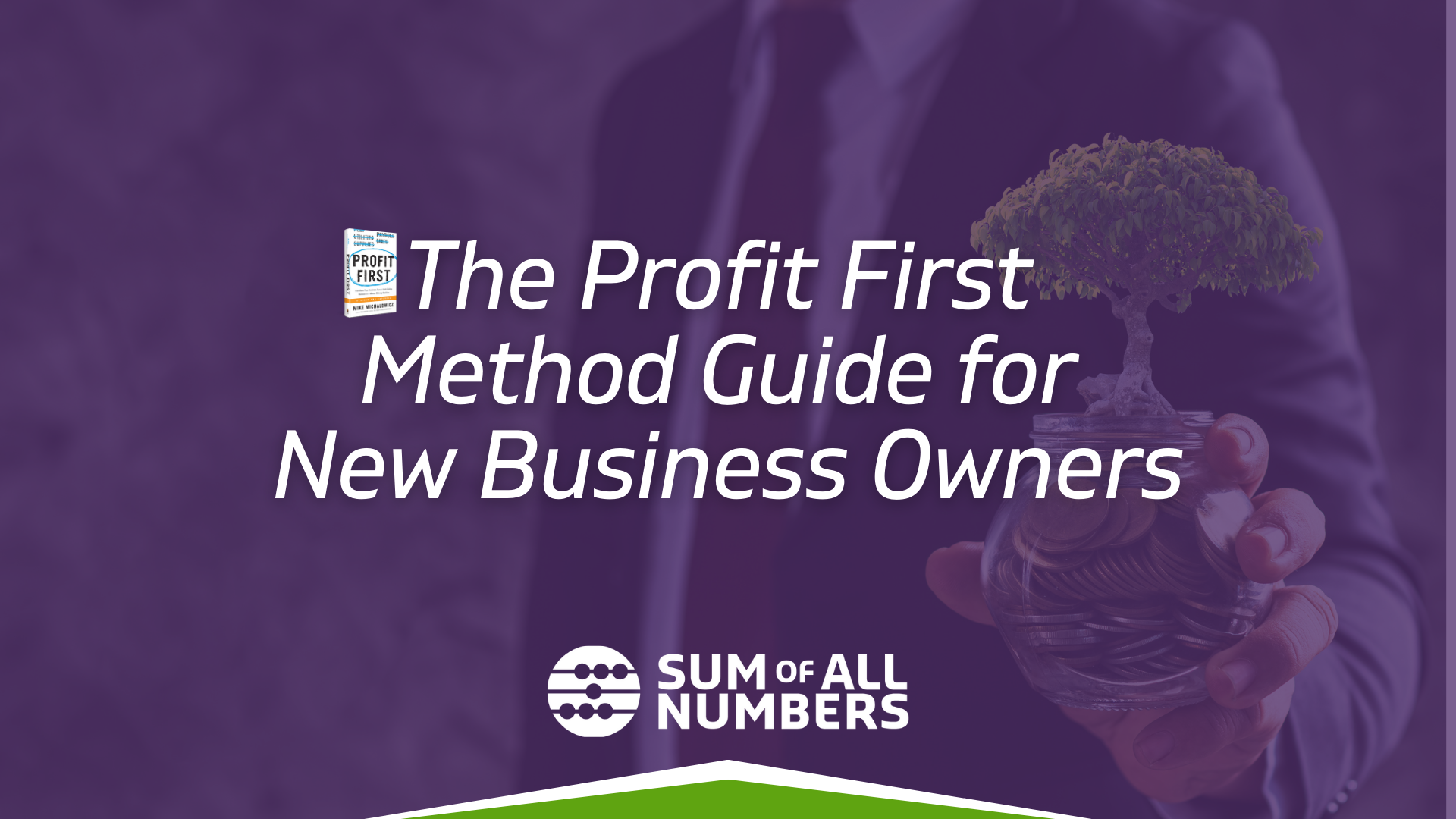When you start a business, one of the first things you need to do is open a business bank account. It is very important that you have a separate account for your spending and savings and your business. This should be the way, even if you have a sole proprietorship business.
According to Mike Michalowicz, entrepreneur and bestselling author, you’re not just going to set up one bank account for your business. You’re going to set up five.
“We have to set up multiple accounts at the bank,” advises Michalowicz. “The goal here is to pre-allocate money to its intended purpose before we use it.”
Why Have a Bank Account For Your Business?
Before we dive into the five different bank accounts Michalowicz urges all business owners to have, let’s talk about why you should have one (separate from your personal account) in the first place.
There are a lot of advantages to having a separate business bank account, and here they are.
Clean and Accurate Records
If you have a separate business bank account, it will be much easier to track your tax deductions. When all your business transactions are in one account, you can be more efficient in rounding up your deductible expenses. It is ideal to have good habits and discipline regarding your taxes and deductible expenses while your business is still small.
Acquire Better Banking Perks
Your small business may only have simple business banking needs, but opening a business bank account allows it to have more advanced financial services as it grows. These may include the following:
● Accepting credit card payments
● Cash and deposit management
● Cash flow management
Building Business Credit
As a new entrepreneur, you may find it difficult to apply and be approved for loans because your business does not have enough credit yet. However, having a business account helps you build your business credit.
Having a good business credit history under your business’s name may help you qualify for more convenient and preferable loans with lower interest rates and better payment terms in the future.
Transparent Audit for the IRS
All businesses have the possibility of being audited by the IRS. It’s not likely to happen, but it’s best to be prepared. There should be nothing to worry about being audited as long as your records are clean. You must keep all your invoices and expense receipts to back up your records too.
Better Business Image
A separate bank account also makes your business look more professional. When you proceed with your transactions, your suppliers, other businesses, and the IRS will know that it is your business they are working with.
What’s even more important about this is that you may have personal liability for the actions of your business if you don’t have a separate account for both.
So Why Have Five Bank Accounts (Instead of Just One)?
In a podcast interview with Mike Dillard of Self-Made Man, Mike Michalowicz took the time to explain the rationale behind why you should have five separate accounts for your business.
“Most of us (business owners) have a primary checking account– I’ll put all my deposits in there and I’ll pay all my bills from it. Which makes sense, but the problem is now we’re serving up one big plate of cash,” Michalowicz begins to explain.
“If we have one singular account (and) we put all of our deposits in there, we’ll look at it– and (let’s) say $10,000 (worth of) deposits came in– we’ll say ‘Oh, I have $10,000 for my business!’ which right there we’ve made a bad assumption. That’s not ten thousand for the business; it has intended purposes it needs to serve. You know there’s gonna be tax consequences, we need to pay the owner of the business, and what about profitability?”
It is for this reason that you will now want to allocate the money coming in from your business into what Michalowicz calls “the five foundational accounts for every business”.
Account No. 1: Inbound Only
Your first business bank account acts as a serving tray: it’s the inbound or depository only account. When any money comes in, it simply sits there waiting to be carved.
The analogy Mike Michalowicz used is a turkey for Thanksgiving. “When you serve the turkey, you never tell the guests when you pull it out of the oven, ‘Hey everyone, grab a knife and fork! Everyone for themselves! Fight for it!’ Of course not. You carve the turkey and you give some to everyone so everyone has a portion.”
The inbound account is going to be our cash turkey if you will. “It’s simply for display purposes and waiting to be carved up”, which now brings us to our other four accounts.

Account No. 2: Profit
The first slice goes into the Profit account. The “profit” is actually a reward to the shareholders for taking the risk of starting or investing in this business.
“So if you are a shareholder in the business, you will share in the profit.” Michalowicz points out that this is something every large corporation or every publicly-traded company does: hand out quarterly profit distributions as a reward to the shareholders.
For taking a risk (investing in the business) and for keeping the investor engaged, the business hands out these distributions every quarter. So anyone involved in starting the business will likely be one of the shareholders as well.
You as the business owner might own everything 100% or you might have some partners who have joint ownership with you. So regardless, you might have a significant part of the distribution in any case.
Account No. 3: Owners’ Compensation
The next account is called owners’ compensation– or owners’ comp– the equivalent of a salary for who is arguably the most important employee in almost every small business: the owner.
“Rarely have I found (an) employee that can deliver at the level of the owner,” observed Michalowicz. “They’re not as dedicated, they don’t know the business as well, they’re not as good at sales, (they’re not as) good (on) the delivery side, they definitely don’t sacrifice their family and lifestyle (as) the owner does.”
Remember: all those components of sacrifice and hard work can easily be the definition of an extraordinary employee. Mike points out that if the owner doesn’t pay themselves like an extraordinary employee, then it is just “a matter of time before resentment kicks in.”
“My first two companies– the horrible truth is I didn’t pay myself when I was running those businesses,” he related. “And then I started to resent them (that) I couldn’t wait to sell either of those companies! I sold them because I was so tired of refinancing my house yet again to cover everyone else’s salary and not pay myself.”
Michalowicz then clarifies that Owners’ Compensation is to give you– the owner– a normalized salary as the best employee’s consistent pay.
“That’s your lifestyle. The profit is a reward above and beyond distributed on a quarterly basis to the shareholders. And if that’s (also) you, the owner– you’re gonna get that as a bonus check.”

Account No. 4: Tax
Your fourth business bank account is allotted to your legal obligations: taxes. “When tax season rolls around, so many entrepreneurs– myself in particular– remember panicking saying ‘oh my gosh, how much do I owe?’ (Then) getting pissed at my accountant (saying) ‘this is highway robbery’ and then panicking and struggling to pull that money together to pay the government.”
Michalowicz then reminds us that the reason we started our business in part is for financial freedom. And financial freedom is where we don’t worry about money,
“So we’re not gonna worry about it. We let the business worry about it. We’re (gonna) allocate from that cash turkey our legal responsibility to pay our income tax…the business will allocate money for that.”
Account No. 5: Operating Expenses
The final fifth account is called Operating Expenses. “That’s what the business operates off of. That’s the business’s lifestyle.”
Mike continues to clarify that percentage allocations usually vary or change based on the size of the business and what we’re targeting. “And we grow into different percentages. But really healthy companies that do, say two million dollars in revenue, will be allocating we found:
- about ten percent (10%) of their money to a profit
- ten percent (10%) toward the owners’ compensation
- fifteen percent (15%) toward taxes
- and the remaining 65 percent toward operating expenses.”
This means if a thousand dollars ($1000) get deposited in your business account today:
- $100 is being reserved for profit
- $100 is being reserved to pay the owner
- $150 for taxes
- and we only have six hundred and fifty dollars ($650) to run the business
“The mistake in the past was (if) a thousand ($1000) came in, we say ‘oh I have a thousand for the business’— that’s not true. We have six hundred and fifty dollars ($650) to run the business.”

The Biggest Advantage of Having This Five-Account System
Some businesses might find this system easy to roll out. And then there might be others that have a problem with having all their available funds spread out this way. Some would even say that they have more bills or obligations than the allotted funds.
“Here’s the golden lesson: when you implement Profit First and you can’t pay your bills, that’s your business telling you (that) you can’t afford those bills. There’s something fundamentally wrong. We’re incurring too many expenses. Our margins are not properly set and we need to sell it a better margin.”
And in this case, Michalowicz explains, the fix needs to be applied. “(But) you don’t “steal” from the Profit account because that unwinds the system. You don’t “steal” from your own account because that unwinds the system (as well). You can’t pay your bills? You have to modify how you’re operating the business.”
Mike explains that by implementing this five-account system for allotting your funds as they come in, your business now starts to “speak to you”.
“(Your business now tells) you what it needs to reverse engineer that profitability that you’ve committed to. And that’s the basic setup of Profit First at the banks.”

A Final Word About Having Five Bank Accounts For Your Small Business
Whichever type of business you have, it is always more advantageous to set up a business bank account. Even if you don’t think you will need all the business services the bank may offer, it still provides significant benefits. If you’re looking to start a business soon, this should be one of the first things you consider.
Having five bank accounts for your small business is one of the key takeaways from the Profit First system. Mike Michalowicz published Profit First to share his insights on how he was able to eradicate his own financial struggles with business.
Today, through his various talks, media appearances, and the growing network of Profit First Professionals, well over 175,000 companies have implemented the system. Get in touch with the Sum of All Numbers today, and find out more on how Profit First can work for your business!




